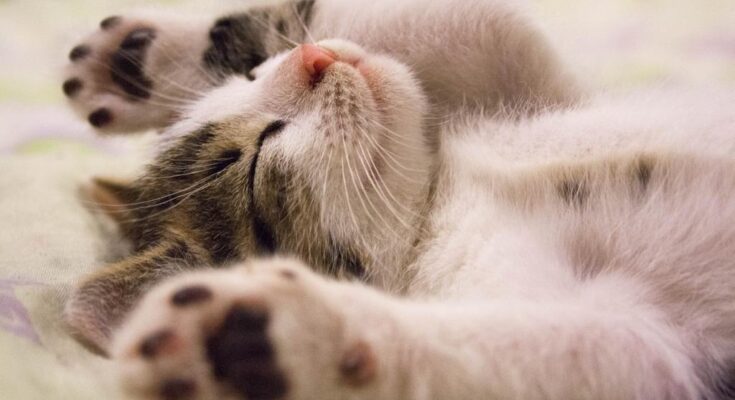Owning a cat is a journey filled with companionship, joy, and the occasional mystery. While cats are beloved members of many households, there are fascinating facts about these enigmatic creatures that might surprise even the most seasoned cat owners. In this article, we’ll uncover the top 10 things you didn’t know about owning a cat. From their communication quirks to their unique behaviors, you’re about to dive into the intriguing world of feline companionship.
1. Feline Facial Expressions Speak Volumes
Cats are skilled communicators, but their expressions can be elusive to decipher. From slow blinks indicating trust to flattened ears conveying fear or agitation, their facial cues reveal a spectrum of emotions. Paying attention to these subtle signs helps you better understand your cat’s mood and strengthen your bond. Keep in mind that a relaxed, open mouth can indicate contentment, while dilated pupils may signal excitement or anxiety.
2. The Mysterious Power of Purring
While we often associate purring with contentment, cats also purr when injured or stressed. Purring releases endorphins, promoting relaxation and pain relief. It’s their way of self-soothing and communicating their needs, making it a multi-purpose tool for emotional expression. Moreover, research suggests that the frequency of a cat’s purr may have potential healing properties, aiding in bone and tissue repair.
3. Nighttime Playtime
Cats are crepuscular creatures, meaning they’re most active during dawn and dusk. Their ancestors were nocturnal hunters, and this behavior persists in domestic cats. Providing interactive playtime before bed not only keeps them mentally engaged but also helps channel their instincts. Consider using toys that mimic the movement of prey to satisfy their hunting drive, encouraging a balanced sleep-wake cycle.
4. The Art of Kneading
If your cat kneads you with their paws, they’re displaying an instinctual behavior from kittenhood. Kittens knead their mother’s bellies to stimulate milk flow while nursing. When your cat kneads you, it’s a sign of comfort, trust, and a lingering connection to their earliest days. To enhance this bonding experience, gently stroke your cat while they knead, and observe their blissful expression.
5. Whiskers: More Than Meets the Eye
A cat’s whiskers are incredibly sensitive, serving as a built-in navigation system. They use these sensory hairs to measure openings, detect air currents, and gauge whether they can fit through tight spaces. Respect their whiskers’ importance by avoiding unnecessary touching. Moreover, you can use your cat’s whisker positioning to gauge their mood—forward-facing whiskers often indicate curiosity, while whiskers pulled back against the face can denote agitation.
6. The Lure of High-Sided Litter Boxes
High-sided litter boxes aren’t just for aesthetics; they offer practical benefits. Cats value privacy while eliminating, and a high-sided litter box prevents litter from scattering. Additionally, senior cats or those with mobility issues appreciate the support high sides provide when entering and exiting the box. A well-designed high-sided litter box can reduce messes and offer a secure space for your cat’s private moments.
7. Cats Get “Zoomies” for a Reason
Have you ever witnessed your cat dashing around the house with wild abandon? These playful bursts of energy, often referred to as “zoomies,” mimic hunting behaviors. Cats are hardwired to chase and pounce, even if their prey is imaginary. This exuberant behavior allows them to release pent-up energy and maintain muscle tone. Encourage zoomies by providing interactive play sessions, engaging your cat’s instincts.
8. Hidden Health Clues in Tail Positioning
A cat’s tail posture can reveal insights into its emotional state. A raised tail indicates confidence, while a puffed-up tail signals fear. Pay attention to any changes; if your cat’s tail position seems abnormal, it could be a sign of discomfort or illness. A gently swishing tail can show excitement or anticipation, while a lashing tail might indicate annoyance. By understanding their tail language, you can respond appropriately to your cat’s needs.
9. Scratching: An Essential Behavior
Scratching isn’t just about maintaining your cat’s claws; it’s a way of marking territory and stretching muscles. Provide scratching posts and pads to satisfy this instinct. Opt for vertical and horizontal options to cater to different preferences. Additionally, consider placing scratching posts near their favorite lounging spots or near windows to make them even more appealing.
10. The Curious Case of Catnip
Catnip’s effects are well-known, but not all cats respond to it. The sensitivity is genetic, with about 50-70% of cats reacting. For those affected, catnip triggers playful and sometimes even euphoric behaviors, followed by a temporary refractory period. Sensitivity to catnip is inherited, so if your cat doesn’t react, it’s perfectly normal. For those that do, offering catnip-infused toys or fresh catnip can provide hours of entertainment.
Bottom Line
Owning a cat is a rewarding experience that unveils layers of complexity and charm. From decoding their facial expressions and understanding the power of purring to appreciating their unique behaviors, each day with your feline friend brings discoveries. Remember, cats are individuals with distinct personalities and preferences, so embrace the journey of uncovering the secrets behind those captivating eyes.



